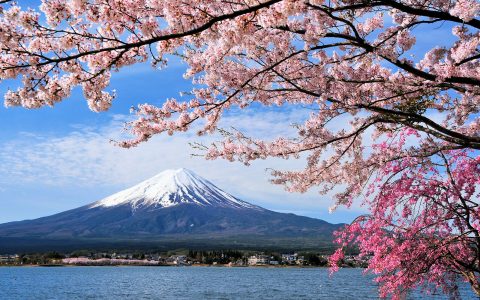A (very, very, very) Brief Introduction to
Hinduism in India
Let’s start with the obvious caveat: Hinduism is so vast that it’s virtually impossible to explain in a few paragraphs.
Indeed, the conflicting messages infused in much of the doctrine (the good and bad aspects of the same god, for example) can be very confusing to an outsider. Its emphasis on acceptance and tolerance, however, provide strong indicators as to why Hinduism has endured through the ages. Despite the complicated nature of the religion, some universal beliefs do exist in Hinduism.
Karma

One such belief is that each individual’s ultimate goal is to break out of the birth-death-rebirth cycle and reach a higher state of consciousness, or Moksha. Some ways that this can be attained are through acts of meditation, devotion, yoga and basically being good.
In order to approach the higher state, one must try to have good Karma, which is basically one’s lot in life. Many things beyond one’s power are explained by good or bad Karma. For example, if the airline loses your luggage, then you have bad Karma; if you find 10 rupees on the ground, then you have good Karma. (Most people on Indian highways seem to have very good Karma; nothing else could explain how seemingly imminent traffic accidents are averted miraculously at the very last moment.)
Good Karma is created by observing one’s Dharma, which is like a rulebook that everything in the universe must follow. Everyone has an innate sense of his or her Dharma, and so observance of these rules is essential to a better future life.
Hindu gods
The Hindu doctrine is primarily spread through storytelling and in the temples built to honour the religion’s myriad gods. As the Hindu religion is rumoured to have over 330 million gods, only the most important will be mentioned here.
Supreme Brahma is the Om, and is seen in all things; as he is formless, he is not worshipped. Under the Supreme Brahma is the Hindu Trinity:

Brahma is seldom worshipped, but both Vishnu and Shiva are popular. These two gods have their own sects, the Vashnavites and the Shaivites, which make up the two largest religious sects in India. Each of the gods has incarnations, or “faces,” which can be very different from their original form.
Some of Vishnu’s incarnations are Krishna, the god of love, and Rama, hero of the Hindu epic, The Ramayana. The popular incarnations of Shiva are: Nataraga, the lord of dance; Durga and Kali, two fearsome female incarnations to whom blood sacrifices are made; and the fearsome Bhairab, destroyer of ignorance and evil who is also the god of locomotion (hence his eyes on the front fenders of Tata trucks).
Shiva is also often represented as a lingam, a cylindrical object that is thought to represent a phallus. The flat shape below the lingam is called a yoni, and this represents the female sex organs. It is very common to see worshippers of Shiva laying flowers and pouring milk over the lingam.
Ganesh

The son of Shiva, the elephant-headed and pot-bellied Ganesh, is one of the most popular gods in Hinduism, as he is the remover of obstacles and deliverer of good luck. However, he ended up with an elephant’s head through a little bad luck of his own: when Shiva returned from a long trip, he mistook Ganesh for an impostor in his house and promptly lopped-off Ganesh’s head. When he realized what he had done, he couldn’t find Ganesh’s head to put it back on, so he replaced the head with that of the first living thing he encountered, an elephant.
Each God also has an animal “transport” for getting around. Vishnu’s transport is the man-bird Garuda; Shiva rides on the bull Nandi; and Ganesh uses a shrew or rat. Often the presence of these animals outside a temple identifies what kind of temple it is; for example, a temple to Shiva will have a bull outside.
Castes
Another virtually universal aspect of Hinduism is the division of society by class, or caste. Although the caste system has been abolished officially, in reality the structure not only still exists, but also permeates every facet of life in the country.
One’s caste is inherited at birth, and it dictates what one is and what one does; castes are indicated by names, so it is virtually impossible to move outside caste limitations. Brahmins are at the top of the heap, filling the religious and warrior roles of society. The other three Varnas, or colours, are the Kshatriya, or warrior class (known in Rajasthan as the Rajputs), the Vaishyas, the trading class, and the Sudras, the farming class.
Outside of the Varna hierarchy are the Dalits, or untouchables. Street cleaners, smiths and other menial workers occupy this class. The divisions between the castes are exemplified in such things as the consumption of food and water; a Brahmin would never accept food or water handled by a lower caste, as it would be considered polluted. Positions in the caste hierarchy are considered to be the result of good or bad Karma in a former life. However, no matter how good or bad one is, one’s caste position stays with you your whole life.
Further Reading
As mentioned above, Hinduism is far too broad a topic for a single blog post. Fortunately, a number of books have been written that will help you learn more about this complex and beautiful faith.
 An Introduction to Hinduism
An Introduction to Hinduism
By Gavin D. Hood
From the back cover: “This book provides a much-needed thematic and historical introduction to Hinduism, the religion of the majority of people in India. Dr. Flood traces the development of Hindu traditions from ancient origins and the major deities to the modern world.”
 American Veda: From Emerson and the Beatles to Yoga and Meditation How Indian Spirituality Changed the West
American Veda: From Emerson and the Beatles to Yoga and Meditation How Indian Spirituality Changed the West
By Philip Goldberg
From the back cover: A fascinating look at India’s remarkable impact on Western culture, this eye-opening popular history shows how the ancient philosophy of Vedanta and the mind-body methods of Yoga have profoundly affected the worldview of millions of Americans and radically altered the religious landscape.
 Meeting God: Elements of Hindu Devotion
Meeting God: Elements of Hindu Devotion
By Stephen P. Huyler
This book documents the Hindu belief in the spiritual component of all human activity and looks at Hindu beliefs and practices, daily worship experiences, and ways of meeting God
Leave a Reply
MORE FROM Asia-Pacific + India

Biking in Cambodia with B&R Expert Guide Fin
Cambodia
The Slow Fund: Rice Production with Ozuchi Village
Japan
Take a Virtual Ride on the Hai Van Pass in Vietnam
Vietnam
How Three Cambodian Hotels Are Joining Forces to Feed Their Communities
Cambodia
Meet Fin—B&R’s Expert Guide in Cambodia
Cambodia
An Insider’s Eye on Vietnam: What to See and What to Skip, According to our Vietnam Expert
Vietnam
Photo Essay: Exulting in Mongolia’s Eternal Blue Sky
Mongolia
The Best Times of Year to Travel to Asia
Vietnam
Chris Litt: On Mongolia and the Desire to Disconnect
Mongolia
Top 6 Multi-Day Walks in Australia
Australia
The 8 Best Restaurants in Auckland
New Zealand
The 5 Best Restaurants in Wellington
New Zealand
8 Reasons Why You Need to Take an Australian Adventure
Australia
Cultural Quirks About Bhutan That Will Blow Your Mind
Bhutan
5 Things to Know Before You Go to Japan
Japan
8 Favourite Restaurants to Eat in Queenstown
New Zealand
10 Must-Try Australian Wines
Australia
Where to Eat in Hong Kong: 7 Best Restaurants
China
A Kiwi’s Guide to Enjoying New Zealand
New Zealand



Great minisummary of Hinduism